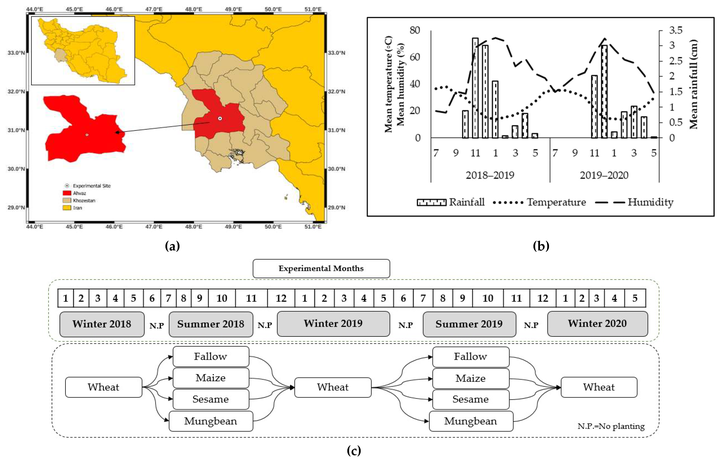[28] Long-term soil organic carbon and crop yield feedbacks differ between 16 soil-crop models in sub-Saharan Africa.

Abstract
To find suitable farming management approaches in the semi-arid climate of Iran, we set up an experiment combining three farm management practices with four crop rotation systems over four growing seasons (two winter and two summer seasons), from 2018 to 2020. The three farm management practices comprised: intensive (IF, with inorganic inputs, removal of crop residues from the soil, and weeds chemically controlled), organic (OF, with organic inputs, a return 30% of crop residues in the soil, and weeds mechanically controlled), and integrated (INT, with mineral/organic inputs, return 15% of crop residues to the soil, integrated weed control). The four crop rotation systems were: fallow-wheat (F-W), maize-wheat (M-W), sesame-wheat (S-W), and mung bean-wheat (B-W). Treatment effects were assessed by chlorophyll (Chl) content, photosynthetic parameters, and wheat grain quality and quantity measurements. All management practices from the first to the second year resulted in increases in the total Chl content and post-anthesis photosynthesis (PAP). The total Chl content under INT was improved through a greater increase in Chl-b compared to Chl-a. Dry matter remobilisation (DMR) was higher under INT than under IF. The highest (39) and lowest (23) grain number per spike were obtained in IF under B-W and OF under F-W, respectively. B-W produced the highest grain yield (541.4 g m−2). The protein contents in farming with organic matter inputs were higher than that under IF. INT produced an optimum level of wheat yield despite a 50% reduction in chemical inputs, and this was achieved through the fast absorption of chemical elements at the beginning of growth, and having access—at the grain filling stage—to elements derived from organic matter decomposition, and through the utilisation of DMR. Our results indicate that implementing B-W and S-W under INT is a promising strategy for this region. However, the results need to be further evaluated by long-term experiments.